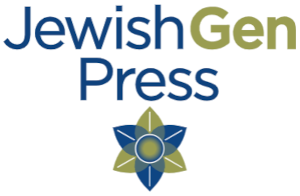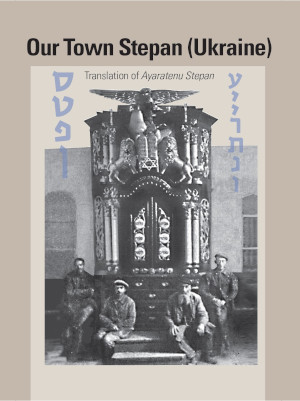

Translation of
Ayaratenu Stepan
(Stepan, Ukraine)
Published by the JewishGen Press
Editor of Original Yizkor Book: Yitzchak Ganuz
Available from
for $35.00
Project Coordinator: Daniel G. Shimshak
Cover Design: Irv Osterer
Layout, formatting and indexing: Jonathan Wind
8.5”x11”, 328 pages hardcover with many original photographs
 |
Details:
Stepan is a town in western Ukraine situated on a plain along the Horyn River. The name came from a King of Poland, Stefan Boturi, who drove off the Russians in the late 16thcentury after they tried to expand their influence in the Polish-Lithuanian Commonwealth of which Stepan was then a part. But like many of the towns in the region, Stepan would change hands many times, returning to Russian rule in 1795 after the partition of Poland, where it stayed until that country was reconstituted after World War I. The Polish period ended in 1939 with the Nazi invasion at the start of World War II. After its liberation, it emerged as part of Ukraine.
In 1775, 521 people lived in town. That grew to 1,717 Jews by1847 and, in the Russian census of 1897, there were 5,137 people, of whom 1,854 were Jews. On the eve of the Holocaust, about 1,300 Jews lived in Stepan, which amounted to about a third of the local population.
Among the highlights of Stepan's Yizkor book:
From the book's epilogue: “With the editing of the material that the remnants of the town of Stepan wrote and collected for the book, we became aware of the town itself, its history, its people and its scenery. And it seems that we were born in Stepan, we walked in its streets, we prayed in its synagogues, we washed ourselves in the Horyn River and in its forests we sought concealment and protection from the gentile soldiers that wanted to destroy us.”
Stepan' [Rus, Ukr], Stepań [Pol], Stepyen [Yid], Stefan, Szczepan
Stepan, Ukraine is located at 51°08' N 26°18' E, 190 miles WNW of Kyyiv.
|
 JewishGen Press
JewishGen Press
 JewishGen Home Page
JewishGen Home Page
Copyright © 1999-2025 by JewishGen, Inc.
Updated 5 Dec 2024 by LA